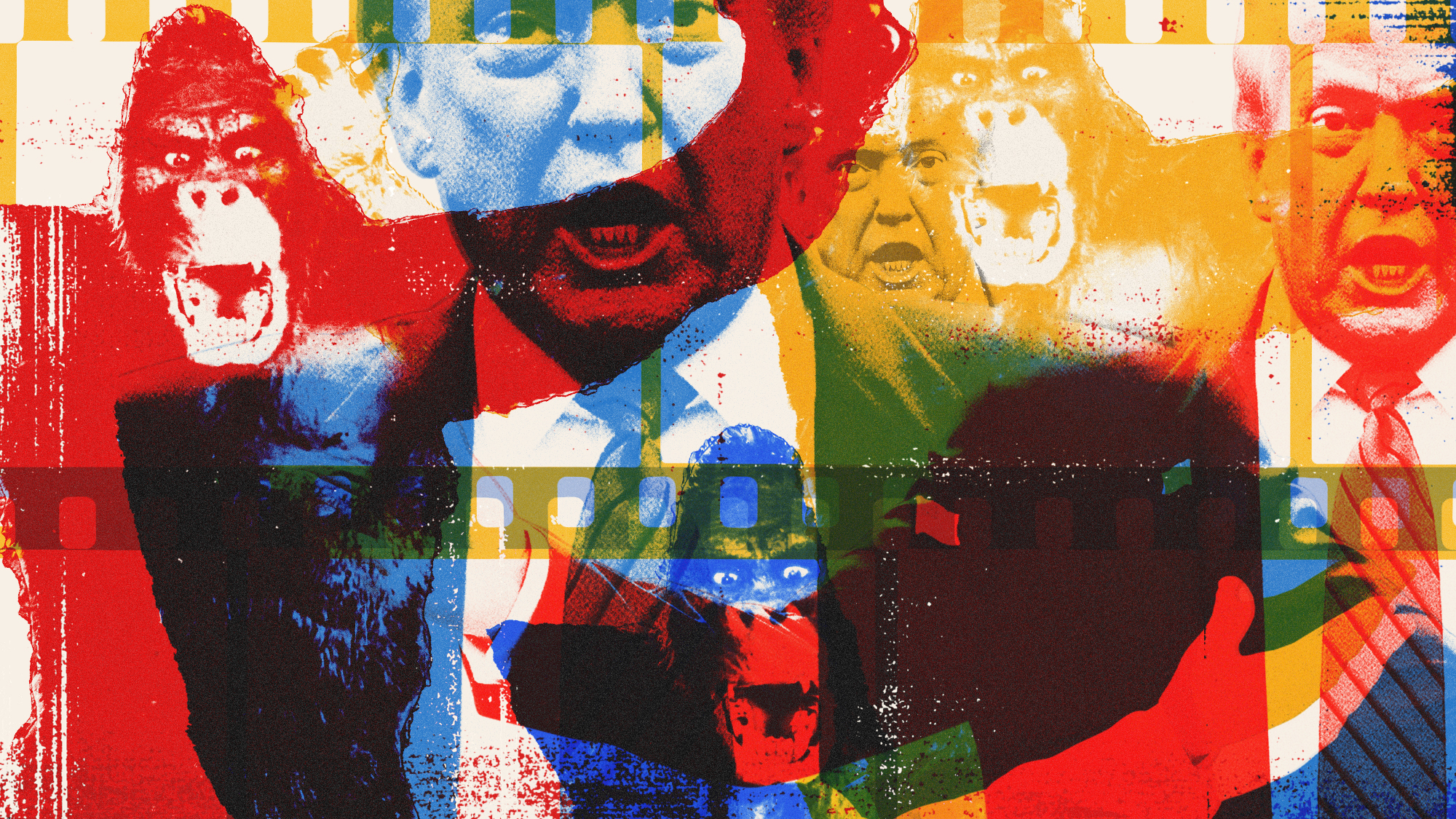Artist of the year: Damien Hirst
Hirst, who is credited by devotees with “clever, Warhol-esque subversion,” has become our era’s richest artist.
2012 will go down in art circles as the year the Damien Hirst bubble burst, said Andrew Rice in Bloomberg Businessweek.Since the early 1990s, the contemporary art world’s reigning enfant terriblehas had little trouble “persuading buyers to pay dearly for his provocations.” His tiger sharks suspended in formaldehyde, his cow heads in vitrines, and a human skull he famously encrusted with diamonds fetched fortunes every time they hit the market. Hirst, who is credited by devotees with “clever, Warhol-esque subversion,” has become our era’s richest artist, worth some $350 million. And 2012 was another “year of accomplishments” for the 47-year-old British artist. A retrospective at London’s Tate Gallery set attendance records, and his mass-produced “spot” paintings enjoyed a global showing by briefly monopolizing all of Larry Gagosian’s 11 galleries worldwide, including four in the U.S. But those triumphs only make the “stunning deflation” of his stock more confounding. Data points to an average loss of 30 percent on recently resold Hirsts—and a third of the 1,700 put on sale since 2009 have failed to sell at all. Art history is littered with artists “who were elevated and later discarded by fickle collectors.” Is Hirst the next artist heading for the scrap pile?
I wouldn’t bank on it, said Blake Gopnik in Newsweek. Prices on much contemporary art seem ready to “crash-land” soon, but this year gave us a Hirst very much “at the top of his game.” With his “thriving pop presence” and “giant market share,” Hirst has become Warhol’s heir apparent—an “artist impresario” who is the de facto CEO of an enterprise that might be called “Hirst, Inc.”—itself an artwork. “His true medium is no longer flies or sharks or spots” but the press, auction houses, and collectors. Critics fulminate at seeing 9,000 butterflies killed for the Tate’s reprise of his 1991 vitrine In and Out of Love. They declare his spot paintings “empty” and his market overinflated. Yet all the chatter becomes part of “a vast, overarching work of art” that challenges our ideas about art’s value while keeping the Hirst brand both controversial and profitable.
Even beyond his staggering market performance, Hirst remains an artist for our times, said Julian Bell in The New York Review of Books. This year’s Tate show reminded us of his capacity to “dream up punchy, innovative” visual provocations. Take For the Love of God (2007), that diamond-studded skull valued at $100 million. Up close, it’s a “disarmingly delightful spectacle,” possessed of “a vulgarity so transcendent it gives vulgarity a good name.” Or A Thousand Years, the 1990 glass box in which flies feed on a bloody cow head and are then killed by a bug zapper. It’s “a kind of grisly living poem.” Hirst has established himself as the “frontman” for the “era of installation” because his best works capture lightning in a vitrine. Riffs on the theme of mortality, they often lack subtlety, but they “set thoughts jangling.”
The Week
Escape your echo chamber. Get the facts behind the news, plus analysis from multiple perspectives.

Sign up for The Week's Free Newsletters
From our morning news briefing to a weekly Good News Newsletter, get the best of The Week delivered directly to your inbox.
From our morning news briefing to a weekly Good News Newsletter, get the best of The Week delivered directly to your inbox.
A free daily email with the biggest news stories of the day – and the best features from TheWeek.com
-
 Can anyone stop Donald Trump?
Can anyone stop Donald Trump?Today's Big Question US president ‘no longer cares what anybody thinks’ so how to counter his global strongman stance?
-
 How space travel changes your brain
How space travel changes your brainUnder the Radar Space shifts the position of the brain in the skull, causing orientation problems that could complicate plans to live on the Moon or Mars
-
 How Iran protest death tolls have been politicised
How Iran protest death tolls have been politicisedIn the Spotlight Regime blames killing of ‘several thousand’ people on foreign actors and uses videos of bodies as ‘psychological warfare’ to scare protesters